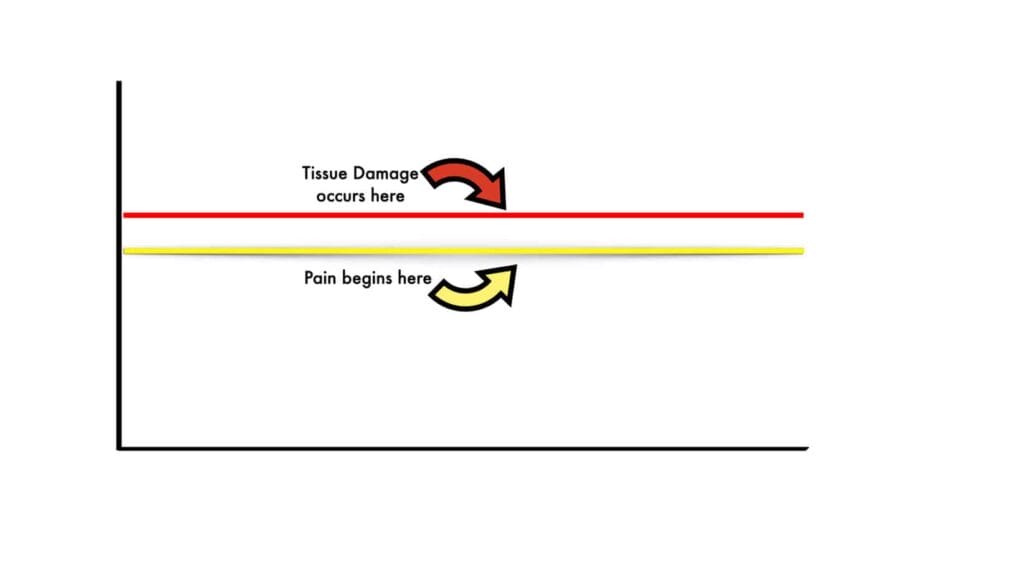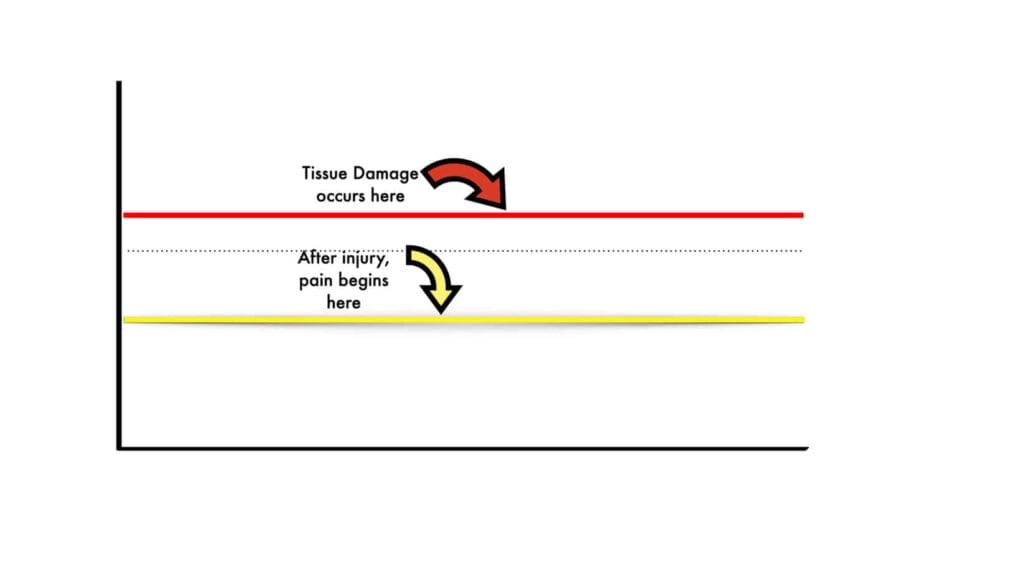“Pain is a complex conversation between your brain and body” –Dr. Kelly Starrett
When people come to us as part of their comeback from an injury and some time in physical therapy, we make a point of having what we call ‘the pain conversation’.
First and foremost, I see you: I’m sorry you’re going through this right now (and I’m sorry you’ve had to deal with this for as long as you have). Pain sucks.
It’s completely understandable that you might feel hesitant about performing certain movements—or that certain movements or exercises are a ‘no’ for you right now. After all, we don’t want to re-injure you or make it worse.
Our starting point for your return to working out is going to be getting you moving in a way that feels safe and doable for your body…and your mind.
And, we should talk about pain.
As Dr Starrett said, “pain is a complex conversation between your brain and your body”. And that makes it worthwhile taking a moment to understand pain a bit better.
First, here’s a quick summary of what science knows about pain thus far:
Brain Connection
One thing about pain that’s often helpful to understand as you make your way back from an injury is that one of the functions of pain is for it to serve as an alarm system.
Ideally, your brain sets the pain threshold for any given tissue somewhere before the point where actual damage will occur. In this way, it’s a rather clever system: if a tissue—let’s say a muscle—is subjected to some form of stress or force, a pain response will kick in as a warning that there’s a risk of damage occurring sometime soon.

After an injury has occurred, however, it is not uncommon for the brain to unconsciously lower the pain threshold for that tissue. What this means is that it takes much less stress/force to trigger the pain response…even though there is often no real risk of damage occurring (because there’s less stress/force impacting the tissue).

Post Physical Therapy
Now, it’s important to note here that by the time you get the ‘all clear’ from your physical therapist to return to strength training and fitnessing, the injured tissue will have healed…which means there is less real risk of damage than there would have been before, when your brain had the pain threshold set higher.
And yet, we often find that your brain has opted for a ‘once bitten, twice shy’ kind of approach and what we need to do is undertake the careful and gradual process of shifting your pain threshold back to something closer to the pre-injured state.
…which sometimes means shifting how we think about approaching pain.
I should pause here to make it clear: this is not a no-pain, no-gain kind of thing. This is more to say that, over the course of your training, we’re going to do a bit of a dance: as you get stronger and more confident, we’ll try exercises that flirt with the edges of your comfort zone.
And always, you get to decide how much you challenge your body and brain. To illustrate, let’s use the example of knee pain and squats. Because your nervous system has become sensitized to certain movements, it’s likely that squatting past a certain depth might result in some alarm bells going off in your body.
We would only have you squat as low as you feel comfortable going. Often, what we find is that as you get stronger, your squat depth improves. Sometimes, though, you’ll feel tentative as you approach that lower squat depth…and this is where the dance begins.
As You Progress
On some days, you’ll feel confident and strong and squatting will be no problem. And on some days, those nervous feelings about hurting your knee will creep in…and on those days, we won’t push it.
Gradually, though, over time, your brain will get the idea that your legs have become strong and that the risk of re-injury isn’t what it once thought it was… (conveniently, this all tends to happen unconsciously)… and, if all goes according to plan*, then one day you’ll find yourself squatting pain-free.
* I should note here that this initial version of the ‘pain conversation’ is a bit of an over-simplification. There are a number of factors at play that make pain a highly personal and individualized experience. Those factors include (but are not limited to) your emotional state at any given moment and your broader mental health, the environmental context and your past experiences with pain and injury. Navigating pain—and eventually getting out of it—is a journey that tends to take time and not a little bit of patience.
If you’d like some help navigating the journey from an injury back to fitnessing and general badassery, let us know.

